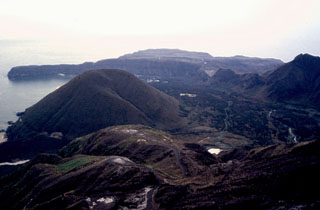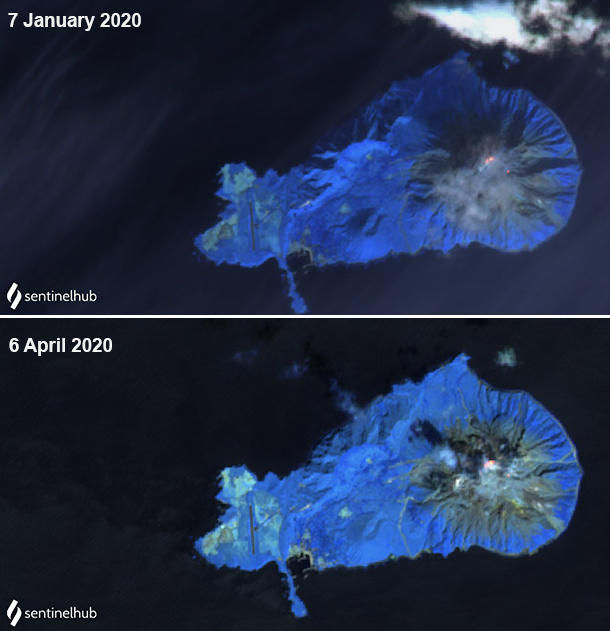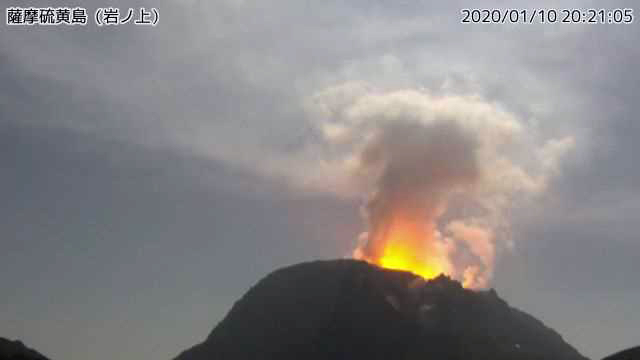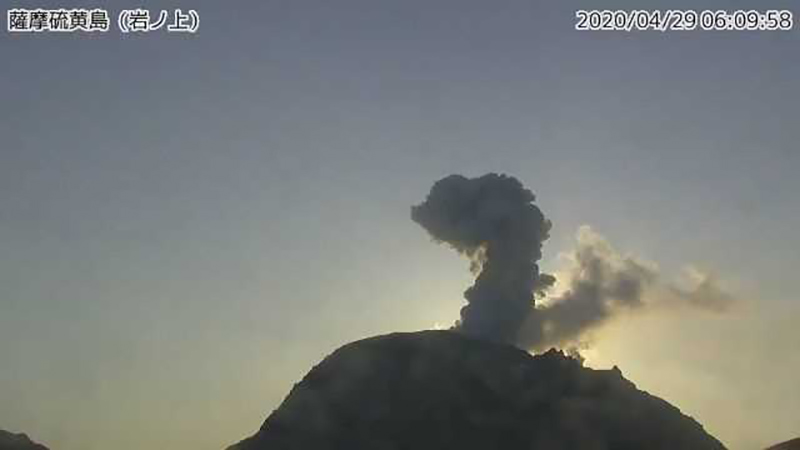Report on Kikai (Japan) — May 2020
Bulletin of the Global Volcanism Network, vol. 45, no. 5 (May 2020)
Managing Editor: Edward Venzke.
Edited by Kadie L. Bennis.
Kikai (Japan) Ash explosion on 29 April 2020
Please cite this report as:
Global Volcanism Program, 2020. Report on Kikai (Japan) (Bennis, K.L., and Venzke, E., eds.). Bulletin of the Global Volcanism Network, 45:5. Smithsonian Institution. https://doi.org/10.5479/si.GVP.BGVN202005-282060
Kikai
Japan
30.793°N, 130.305°E; summit elev. 704 m
All times are local (unless otherwise noted)
The Kikai caldera is located at the N end of Japan’s Ryukyu Islands and has been recently characterized by intermittent ash emissions and limited ashfall in nearby communities. On Satsuma Iwo Jima island, the larger subaerial fragment of the Kikai caldera, there was a single explosion with gas-and-steam and ash emissions on 2 November 2019, accompanied by nighttime incandescence (BGVN 45:02). This report covers volcanism from January 2020 through April 2020 with a single-day eruption occurring on 29 April based on reports from the Japan Meteorological Agency (JMA).
Since the last one-day eruption on 2 November 2019, volcanism at Kikai has been relatively low and primarily consisted of 107-170 earthquakes per month and intermittent white gas-and-steam emissions rising up to 1.3 km above the crater summit. Intermittent weak hotspots were observed at night in the summit in Sentinel-2 thermal satellite imagery and webcams, according to JMA (figures 14 and 15).
Weak incandescence continued in April 2020. JMA reported SO2 measurements during April were 400-2000 tons/day. A brief eruption in the Iodake crater on 29 April 2020 at 0609 generated a gray-white ash plume that rose 1 km above the crater (figure 16). No ashfall or ejecta was observed after the eruption on 29 April.
Geological Summary. Multiple eruption centers have exhibited recent activity at Kikai, a mostly submerged, 19-km-wide caldera near the northern end of the Ryukyu Islands south of Kyushu. It was the source of one of the world's largest Holocene eruptions about 6,300 years ago when rhyolitic pyroclastic flows traveled across the sea for a total distance of 100 km to southern Kyushu, and ashfall reached the northern Japanese island of Hokkaido. The eruption devastated southern and central Kyushu, which remained uninhabited for several centuries. Post-caldera eruptions formed Iodake (or Iwo-dake) lava dome and Inamuradake scoria cone, as well as submarine lava domes. Recorded eruptions have occurred at or near Satsuma-Iojima (also known as Tokara-Iojima), a small 3 x 6 km island forming part of the NW caldera rim. Showa-Iojima lava dome (also known as Iojima-Shinto), a small island 2 km E of Satsuma-Iojima, was formed during submarine eruptions in 1934 and 1935. Mild-to-moderate explosive eruptions have occurred during the past few decades from Iodake, a rhyolitic lava dome at the eastern end of Satsuma-Iojima.
Information Contacts: Japan Meteorological Agency (JMA), Otemachi, 1-3-4, Chiyoda-ku Tokyo 100-8122, Japan (URL: http://www.jma.go.jp/jma/indexe.html); Sentinel Hub Playground (URL: https://www.sentinel-hub.com/explore/sentinel-playground).




